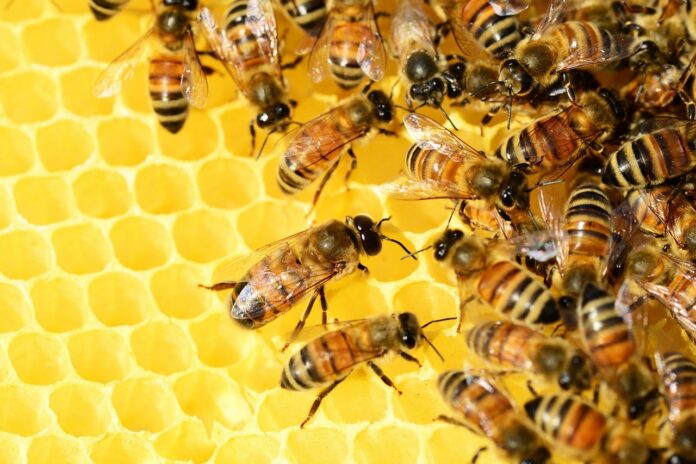Don’t let your land stay idle, invest in contractual beekeeping
Profitable beekeeping: Savannah Honey was founded ten years ago with the aim of building a community of smart, motivated and socially responsible beekeepers in Africa. Daily we are inspired by the beauty and artistry of bees and their honey.
Like bees, Savannah Honey is a full-service beekeeping operation. We deliver, install, and manage beehives for farmers across the continent. We bring scientific know-how and environmental enthusiasm to the work of connecting the communities we work with the benefits of beekeeping.
We also provide ready market for all beekeeping products through 5 years contract i.e Honey @ Kshs 550/kg, Propolis @ kshs 1,900/kg, Bee pollen @kshs 6,800/kg, Waw @ kshs 700 per kg, RoyalJellly @ kshs 38,000, Bee Venom 4,000/gram.
Beekeeping plays an integral part of most agricultural ecosystem. Indeed, the role of bees cannot be over-emphasized. Farmers in Kenya are increasingly turning to beekeeping as an alternative source of residual income. This means that as a farmer, you can earn extra income as you tend to your core farming business.
Kenya has been grappling with deficits in honey product per annum, forcing the nation to import over 80% of the national supply from neighbouring Tanzania and other countries. Beekeeping thus is an industry with great promise to any Kenyan farmer willing to venture.
We have curated a list of 21 essential beekeeping equipment to supersize your beekeeping business – whether you are a novice or a seasoned apiary enthusiast.
Our equipment are of the best quality and our prices are very competitive. We also offer free training and delivery of the equipment.
1. Langstroth Beehives
Langstroth beehives are synonymous with beekeeping, and their popularity, as well as effectiveness has tasted the test of time and it tops our list as a must-have for your beekeeping.
But what makes Langstroth Beehives so special?
First, research by FAO indicates that bees nesting in surrounded environments like in the beehives produce far more honey than those that nest openly, as in fields, naturally.
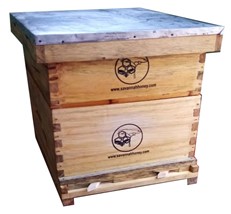
Langstroth beehives are designed to ensure that little or no harm is inflicted on bees during the harvesting process, ensuring sustainability of the honey production by eliminating need for further hive colonization. Similarly, Langstroth beehives are good for the environment, since they are easy to work with—the bees enjoy well engineered structure against intrusion by rodents and pests like mice and ants.
Since Langstroth beehives already have wax coating, they make the process of hive colonization easy, since creation of honey combs has been facilitated. The internal structure of the hive particularly how the frames are designed mimics nature helping in comb-making.
As a beekeeper, you get to work with a compact space that can be tiled high, enabling you to have more bees in a single hive.
2. Refractometer
The refractometer enables the beekeeper ensure the quality of honey output is consistent and of the highest quality.
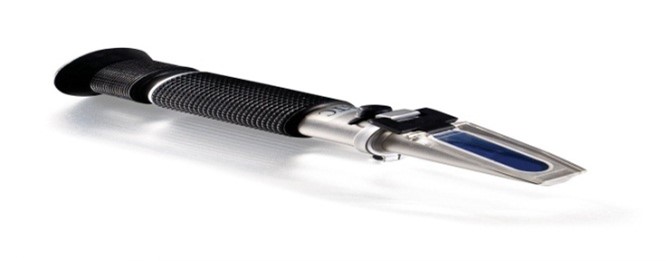
The refractometer works by measuring the refractive index of honey.
In principle, when there is change in fluid concentration, the fluid’s refractive index changes, enabling the beekeeping to assess the quality of honey if it has been diluted with water, or tampered with. Kenyan consumers are increasing becoming aware of, and consistently demanding quality, pure, unadulterated honey from farmers.
The refractometer comes in aluminium alloy, and has been designed to resist rust and abrasion, ensuring food-grade safety of the honey. It boasts of a refractive optical lens with a great refractive index for accurate measurements.
3. Kenya Top Bar Hive
The Kenya Top Bar Hive has achieved significant success of the years in beekeeping.
It is an altered version of the Langstroth beehive, but where the honey combs are suspended at the centre of the bar.
The combs thus hang, and the holding frames can be easily removed and returned, especially during harvesting or during routine inspection of the hives. Therefore, the combs maintain a natural U-shape, just like they would in a natural, open-air hive, and they have stability in design. There is also space within the hive for bees to move from comb to comb, since the combs do not attach to the walls of the internal walls of the hive.
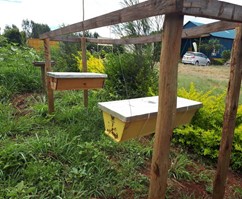
The Kenya Top Bar Hive is relatively simple to make, and significantly cheaper to purchase. On the downside, since the combs are suspended from the top bars, the might run the risk of breaking, since they are brittle, so care must be applied during harvesting.
The Kenya Top Bar Hive presents a huge advantage to the Kenyan beekeeper, since its lower costs lower the barrier of entry to local peasant farmers to start out in beekeeping. The design is particularly made to work best with the aggressive African tropical bees prevalent in Kenya, and the region.
4. Bee Smoker
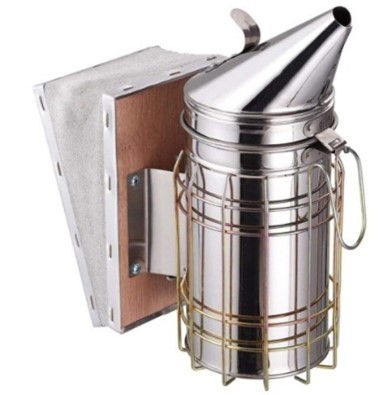
It is critical that the highest safety standards are ensured during honey harvesting, and routine checks on beehives during normal apiary management. Our Bee Smoker has been designed to guarantee the farmer’s safety, as well as the bees.
It is commonly understood that smoke helps in making bees calm during harvesting by disguising defence pheromones-2-heptanone and isopentyl acetate-making them more docile during these critical operations.
The smoker is easy to use, and has sturdy leather bellows to fan the flame of your fuel, as well as a heat shield to prevent the farmer burning during usage. This simple design is user friendly, and can be operated by novice beekeepers. Furthermore, you can use local fuel to fire the smoker such as charcoal, dry wood and grass, making it highly applicable for Kenyan beekeepers.
5. Bee Venom Collector
Bee Venom is a leading product of beekeeping and farmers can leverage this resource to boost their income.
Bee venom is a clear liquid excreted by bees through their stingers when they feel endangered. This is an acidic compound containing both inflammatory and anti-inflammatory properties and has widespread medicinal applications.
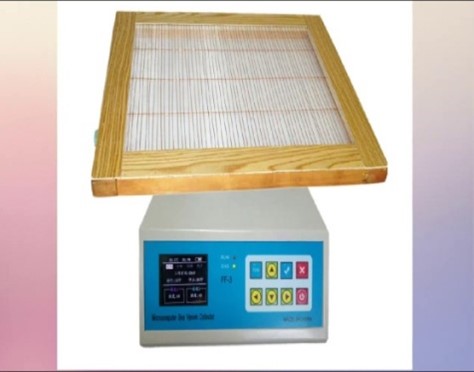
The Bee Venom collector is an electronic device powered by 2 AA-batteries that releases a small electric shock that stimulates bees to release their venom. It is simple to set up and use, and is placed at the bottom of the hive, ensuring ease of use and safety of the hive.
The Bee Venom Collector comes with a micro-processor that enabling its efficient use, within multiple hives per day. It is encased in high-quality MDF to ensure durability of the device, and ease of use in varying weather conditions. It requires little or no maintenance since the battery can power the device for days.
6. Centrifuge Machine (Honey Extractor)
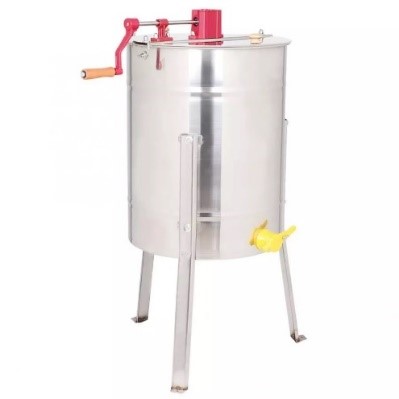
This piece of equipment is designed to aid the process of honey extraction from the combs after harvesting.
It is made up of a stainless-steel body encasing, and a metallic crank that turns releasing honey from the comb using centrifugal forces. In the interior is a stainless-steel tank that can hold up to 3 frames at once. All the components are made from food-grade materials that are easy to clean and are safe for human consumption.
Similarly, the components are rust-free, and abrasion proof, ensuring the highest food safety standards. The driving crank operates efficiently, and the device is ideal for commercial and household beekeeping processing.
7. Propolis Collector
This trap collection is designed in the form of a frame, and is useful for collecting propolis, a by-product from beehives. Propolis is a gum-like greenish-brownish paste used by bees to coat hives. This coating helps to seal off the hives, and is used to keep off pests, and prevent external contamination from outward sources.
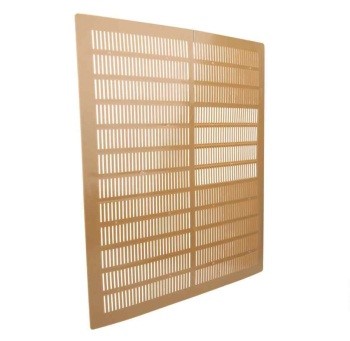
Propolis has been for ages used as a medicinal healer for wounds, abscesses, and boasts of antioxidants.
The propolis collector is made from high grade plastic, that is rugged and designed for repeated use. It also boasts of non-hazardous plastic frame that is perforated to allow for flow of air, for optimum performance during routine usage.
8. Pollen Trap
The Pollen Trap accessory is designed to make the beekeeper’s life easier by enabling him to collect pollens with little movement of the hive, and no need to lift the beehive.
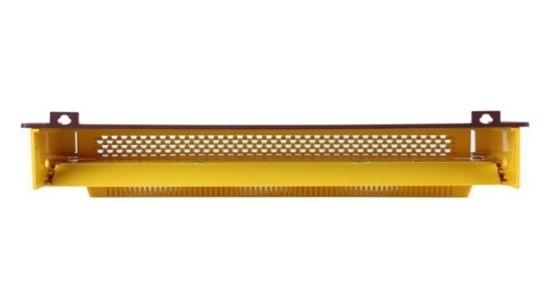
It is ventilated and is suitable for enabling bees to enter and exit the hive with ease. Furthermore, the accessory is made from sturdy, non-toxic plastic, that works best in all conditions. You can thus collect the pollen without interfering with the hive. It nonetheless requires that the Queen Excluder be removed prior to pollen harvesting, and that all entrances be sealed for safe and optimal use.
9. Double Sided Sieve
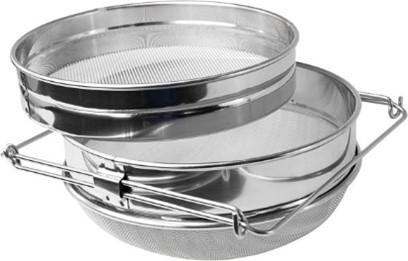
The stainless-steel double-sided sieve is ideal for straining honey after harvesting, thereby removing impurities from the final product.
It is made from food-grade steel, and the strainer is fine, and double-placed to give you best service during honey sieving. Furthermore, the sieve is made to be impervious to corrosion, oxidation, thereby ensuring honey safety. It can be easily cleaned and reused.
The sieve boasts of an adjustable girth and arms to work well with different buckets of varying diameters. For clean, impurity-free honey output, this accessory is perfect for you.
10. Beekeeping Suit
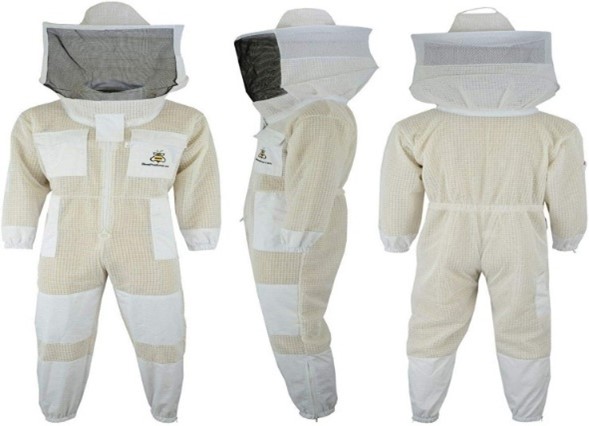
The beekeeper’s safety cannot be over emphasized during honey harvesting, and routine maintenance. Indeed, the African tropical bees are very aggressive creatures so adequate protection is required when handling.
Our beekeeping suits are designed to protect you when coming into close contact with bees—covering you from head to toes. Made from exceptional material, the suits which are derived from cotton and polyester fibres, also ensure your comfort during usage. The suits also have pockets enabling you to store requisite items when in use. In addition, the suit is fitted with elastic bands to seal off any entry points for bees, and guaranteeing your safety during usage, as the bees cannot gain contact with your skin surface.
With a well-ventilated design, you can be sure of relative comfort under our Kenyan sweltering sunny conditions, as you work on the apiary.
Moreover, with appropriate openings, you can use the mesh-fibre to freely when in need. The lightweight design also adds a layer of comfort to the farmer as you use it for safety.
11. Beekeeping Gloves
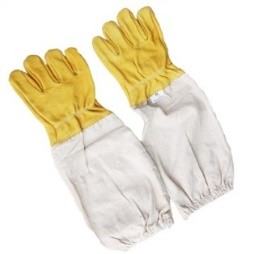
During beekeeping operations, the safety of your hands require maximum protection for you, and the bees. Our beekeeping gloves are made from cowhide, making them safe for use against the aggressive beestings, durable enough to guarantee you years of service.
With adequate ventilation, your hands get to breathe, avoiding excessive sweating, especially during the hot season, thereby giving you comfort, and for the apiary safety.
We offer these gloves in varying sizes to ensure an optimal fit for each user, and with extra arm and sleeve protection, you can be have peace of mind since no bees with be able to crawl in and deliver its sting.
There is a canvas lay that provides extra protection. You can also opt for the thinner goatskin variety especially when sensitive operations that require greater accuracy is needed.
12. Queen Excluder
This beekeeping accessory consists of a 10-frame structure that is used to separate the brooding nests, from where bees store the honey. This helps in the hive’s organization, thereby making matters easier during honey harvesting.
The Queen Excluder comes with smooth perforations that allow ease of movement through, without the bees injuring themselves through the passages.
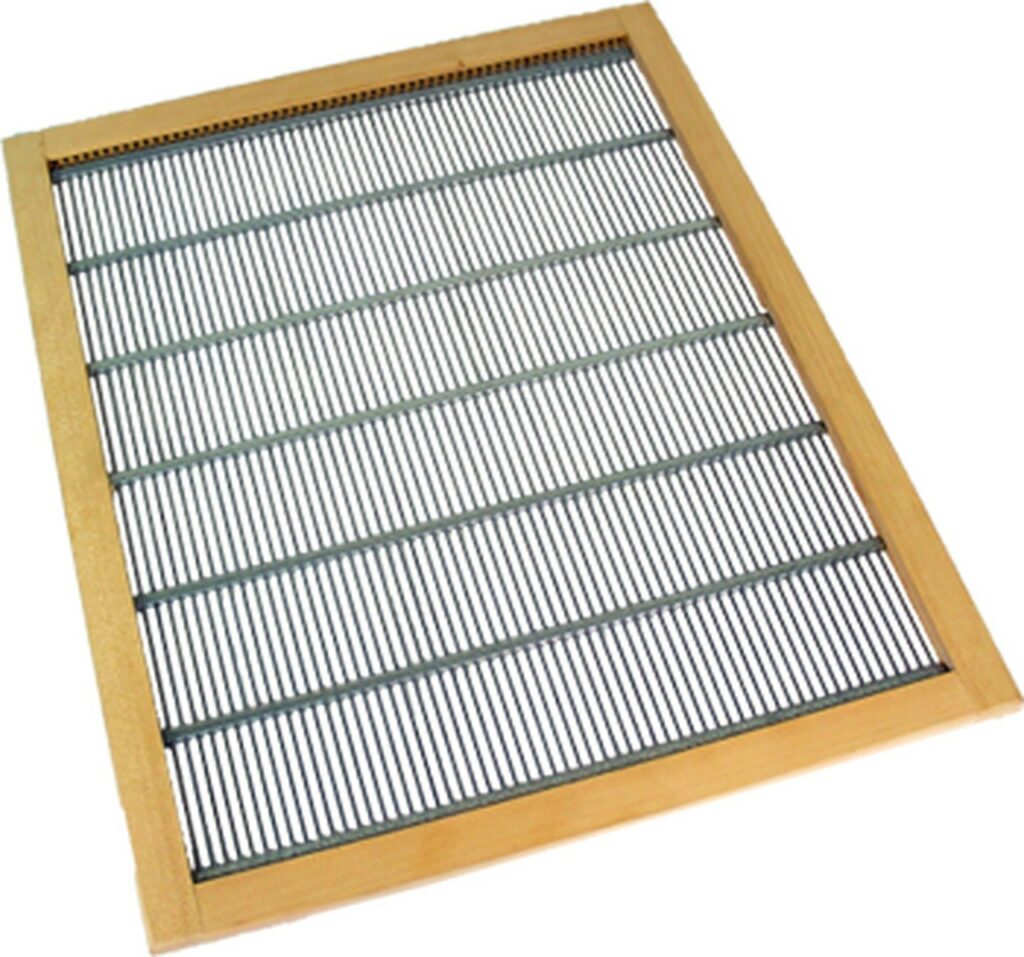
This accessory is made from malleable non-toxic plastic, that is safe for the bees and the environment. With ease of use being a key feature, you’ll be happy that the Queen Excluder can work well with different types of beehives. It is conveniently placed above where the queen bee lays her eggs.
Furthermore, the Queen Excluder can also aid in raising the queens, and for limiting the queen bee’s movements into the honey boxes. The excluder can also be adjusted to work with different hive sizes.
13. Honey Bucket
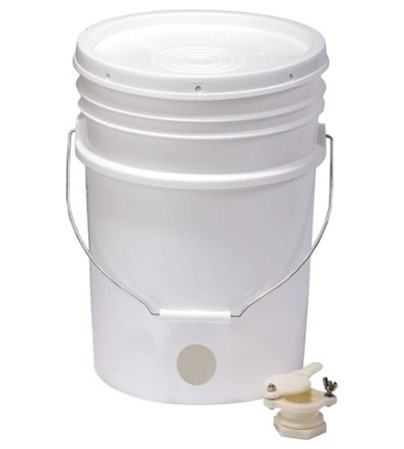
This 20-litre plastic container is useful during the honey harvesting process. You use it to hygienically collect and transport honey from the beehives, to the processing area.
It designed with a clear secure lib, and a honey gate, you can now conveniently transfer the honey with minimal wastage, since the gate functions as a tap. It is also useful during extraction, as it can transfer honey for storage and packaging.
The Honey Bucket is made from food-grade plastic that is easy to clean, and has a slip-proof metallic handle for moving.
14. Uncapping Fork
The Uncapping Fork is made from quality stainless steel, and has teeth for scraping honey during harvesting. It has been designed to easily access areas within the hive that would erstwhile be difficult to reach, so that the farmer can collect all the honey.
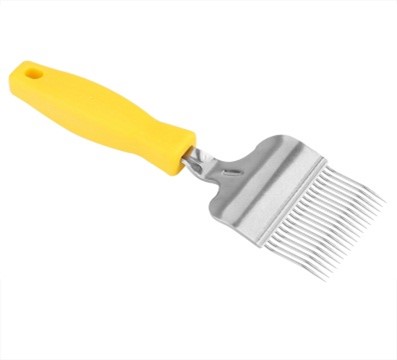
The fork has a plastic handle ensuing good grip during usage, and is easy to clean, thereby ensuing hygiene and health safety.
It can also be useful for removing lids from the comb, since the sticky extract covering the hive’s interior makes things rather complicated. You can easily remove combs for inspection, and other maintenance services.
15. Beekeeping Brush
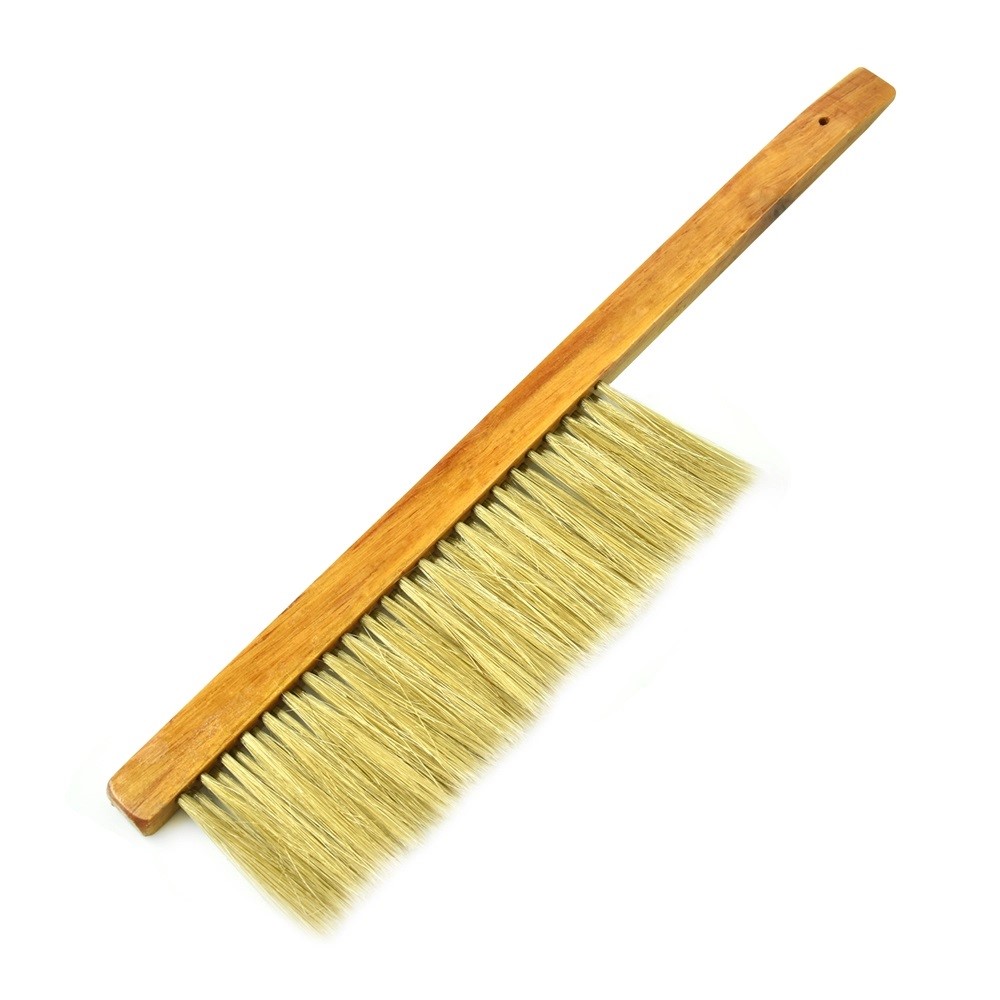
The Beekeeping Brush is a little accessory that serves a couple of useful roles.
Made from soft, but sturdy bristles, and a wooden handle, you use it to gently brush off the bees, when the hive is opened, and there is need for inspection. This ensures that little or no damage is inflicted to the insects.
It also comes handy since the supple bristles are completely harmless to the bees. Coming at the convenient dimension of 35 centimetres, and 7cm at the bristles, you can nudge bees from an entire comb with a single swipe of the brush.
16. Stainless Steel Honey Warmer
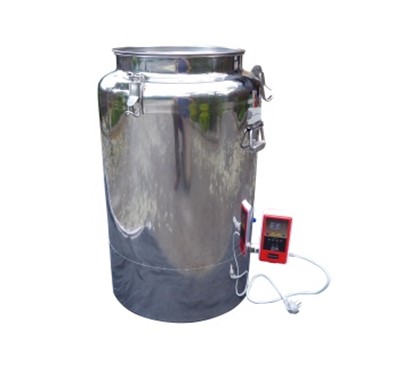
This container plays a useful role during honey packaging. It is a 100-litre container fitted with a heating element, and a thermostat to regulate the temperature. This helps to ensure that your honey is at the right temperature, and liquid state during packaging.
Heating helps decrystallize honey, to ensure smooth flow. A honey gate ensures that the liquid is poured accurately thus avoiding messes and wastage.
With a stainless steel body, the warmer is easily cleaned, and is rust free. The thermostat enables you to maintain the honey’s temperature at a safe 30°C which is ideal for packaging. You can also mix it conveniently with other additions where necessary.
The 100-litre capacity ensures that you get substantial amounts of honey at a go ready for packaging.
17. Uncapping Tab
The Uncapping tab comes in handy during honey harvesting. It provides a convenient way for uncapping honey.
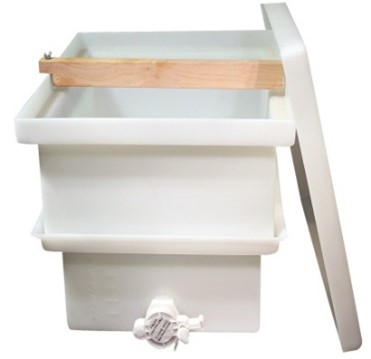
Built from strong, sturdy materials, you can be assured of years of service, from this tab. Similarly adding a honey gate can be easily done for better service. The uncapping tab weighs about 8 kilos and is made from thick components for durability.
18. Hive Scraper Tools
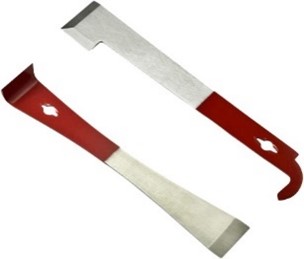
This two-piece stainless-steel accessory comes with multiple uses during hive scrapping.
It has a curved end that can be used for raising frames during harvesting, or even in routine hive inspection. On the other end is a flat surface that is handy for cleaning off honey, or propolis from the beehive frames.
These accessories can also be used to pry open surfaces, like stuck hives from propolis on their inner walls. They come in hardened heat-treated steel, but watch out as they might be breakable, when extreme force is applied.
Use it to scrap off excessive beeswax from the hives when necessary.
19. Plastic Needle Roller
This uncapping tool is helpful during the extracting process. It comes designed with a strong wooden handle, for maximum grip, and soft plastic tips.
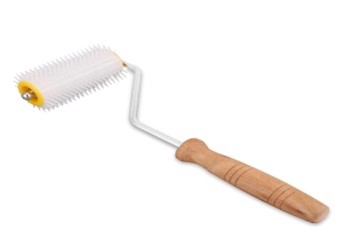
These are plastic tips are gently rolled over each cell on the beehive. Use it gently so that the hive is not damaged for the best results. This works hand in hand with an uncapping fork, especially when perforating the comb cells is difficult. The roller then is used afterwards to enable the uncapping process be conducted with ease.
20. Electric Uncapping Knife
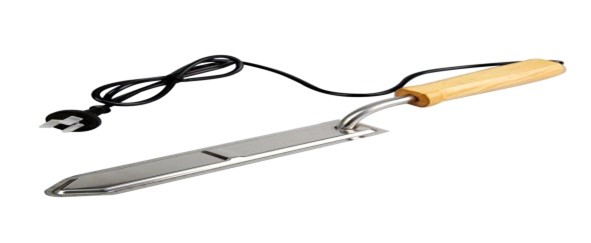
This electric uncapping knife comes with a built-in thermostat and is useful for removal of wax or honey from the frames during harvesting.
The thermostat ensures that an ideal working temperature is provided, but extra caution is applied when using it, and for prevention of injuries from burns.
The electric uncapping knife heats up quickly enabling you to cut through the solid wax, and hard crystallized honey, effectively.
Be careful when using it to prevent accidents.
21. Scraper Tool
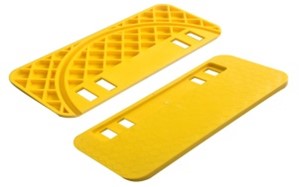
Weighing about 500grams, the Scrapper tool is a vital component of apiary management. This tool is useful in scrapping all manner of items from the hive: from propolis, to dirt, to foreign particles at the bottom of the hive.
The ABS plastic component makes the scraper resilient, robust for vigorous use, and for effectiveness. It works well with other beekeeping equipment like buckets, and all manner of frames used in beekeeping, for cleaning surfaces.
The Beekeeping Scraper Tool is also useful in opening of hive covers due to its tough and rugged build, and should serve the farmer with ease.
Conclusion
While not by all means exhaustive, this list of implements are useful in various capacities in the hive colony, and for apiary management. They are engineered to be function as enablers: making the Kenyan beekeeper’s work easy, while offering care and protection for the bees, and the precious honey combs.
About Savannah Honey Limited
Savannah Honey Limited hosts expert beekeeping and apiary management professionals. If you need any beekeeping equipment, contractual beekeeping, training to get started with beekeeping or to supersize and manage your existing beekeeping business.
Contacts: 0721965337, [email protected], www.savannahhoney.org.




